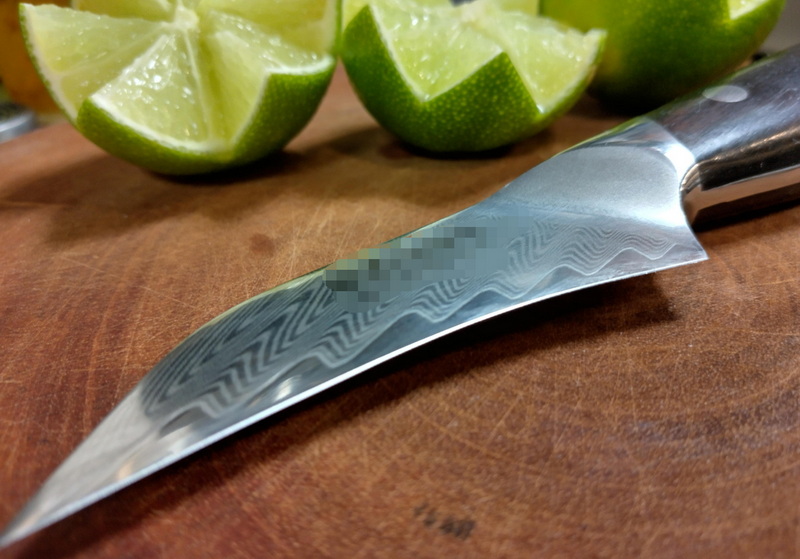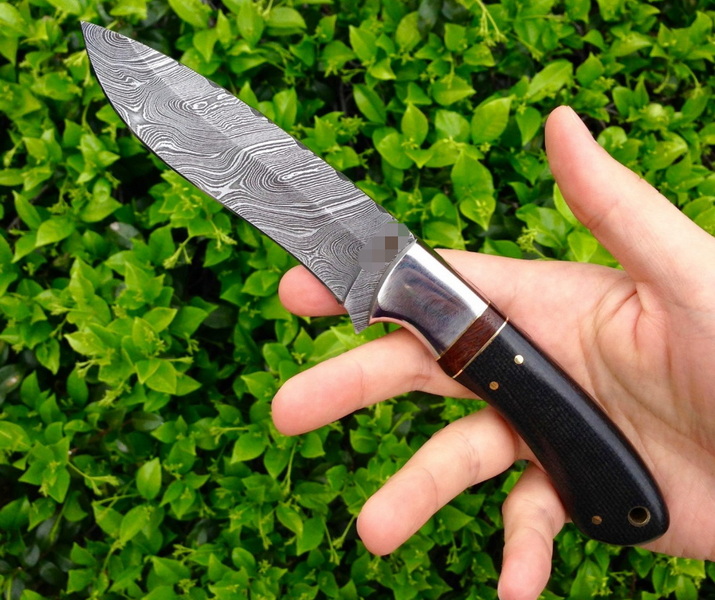- All
- Product Name
- Product Keyword
- Product Model
- Product Summary
- Product Description
- Multi Field Search
Views: 222 Author: Ann Publish Time: 2025-10-19 Origin: Site











Content Menu
>> Key Features of Real Damascus Knives:
● Common Characteristics of Fake Damascus Knives
● How to Spot a Fake Damascus Knife: Step-by-Step
>> 3. Feel the Weight and Balance
>> 4. Look for Manufacturer's Mark
>> 7. Test Flexibility (Carefully)
● Maintenance Tips for Real Damascus Knives
>> Benefits of Buying Authentic Damascus Knives from Trusted OEM Manufacturers
● Understanding the History and Manufacturing Process of Damascus Knives
>> 1. What exactly makes Damascus knives unique?
>> 2. Can a fake Damascus knife cut well?
>> 3. How do I maintain a Damascus knife?
>> 4. Are all Damascus patterns the same?
>> 5. How can I be sure of authenticity when buying OEM Damascus knives?
Damascus knives are prized for their exquisite beauty, durability, and exceptional cutting performance. However, the high demand has led to the rise of counterfeit or fake Damascus knives flooding the market. For manufacturers, brand owners, wholesalers, and discerning buyers, being able to identify authentic Damascus knives from fakes is essential.
In this article, we will explore what makes a Damascus knife genuine, how to differentiate real from fake, and important buying tips. This guide is particularly useful for foreign brand owners and wholesalers seeking reliable OEM Damascus knife suppliers in China.

A Damascus knife is made from Damascus steel, a traditionally forged steel known for its layered patterns and superior qualities. These knives feature multiple steel layers hammered, folded, and forged together, producing a distinctive wavy or watery pattern unique to each blade.
- Visible, flowing layered steel patterns on the blade surface
- Exceptional sharpness and edge retention thanks to high carbon steel
- Durability combining hardness with flexibility
- Pattern is not just printed or acid-etched but forged into the metal
Fake Damascus knives may try to copy the pattern but lack the structural advantages of real Damascus steel. Here are tell-tale signs:
- Pattern is printed or etched on flat steel rather than forged
- Uniform, repeated patterns that look too perfect or repetitive
- Lightweight blade lacking heft or feeling of layered steel
- Low-quality steel that dulls quickly
- No flexibility or inconsistent hardness along the blade
Look closely at the blade pattern: real Damascus shows irregular, flowing lines with depth, not overly uniform or synthetic-looking designs.
A real Damascus blade holds an extremely sharp edge for a long time and can be honed easily.
Authentic Damascus knives tend to have a solid feel, with weight balanced between blade and handle.
Reputed OEM Damascus knife makers often stamp or laser engrave their logo and steel type clearly.
Request proof of authenticity or factory certification if purchasing bulk OEM knives.
Damascus steel is usually not magnetic; a strong magnetic pull may indicate a fake or stainless base.
Real Damascus steel combines hardness with some flexibility. Too brittle or too soft may indicate fake.

To preserve your genuine Damascus knife:
- Hand wash and thoroughly dry immediately after use
- Avoid dishwasher and abrasive pads
- Oil the blade periodically to prevent corrosion
- Store properly in a knife block or sheath
- Guaranteed high-quality steel and craftsmanship
- Unique blade design with fine edge retention
- Better corrosion resistance
- Brand reputation protection for resellers
The allure of Damascus knives is deeply rooted in their fascinating history and meticulous manufacturing process. Damascus steel originally emerged over 2000 years ago, with the earliest blades crafted in the Middle East. These blades became legendary for their strength, sharpness, and distinctive watery patterns, much admired by warriors and chefs alike.
Historically, the steel came from high-carbon iron ore, famously known as "wootz" steel, originating from India and transported to Damascus, Syria, a key trading hub. The forging process involved complex steps of heating, folding, and hammering, combining layers of hard and soft steel to marry sharpness with flexibility. The rapid cooling or quenching hardens the steel, while layers ensure resilience and reduce brittleness.
Modern Damascus knives replicate this process using advanced forge welding techniques. Steel layers are carefully welded, folded repeatedly, and manipulated to create intricate patterns and superior blade qualities. Some craftspeople add acid etching to enhance the visual contrast of the layers.
Unique to Damascus steel is the balance achieved between hardness for a sharp cutting edge and enough flexibility to prevent blade breakage. This combination is why many high-end kitchen knives use Damascus steel, prized by professionals and enthusiasts.
For OEM manufacturers, maintaining rigorous control over each step—selection of steel grades, forge welding quality, hardening treatments—is crucial to producing authentic Damascus knives that meet international standards.
Spotting fake Damascus knives requires a keen eye for detail and knowledge about steel patterns, blade construction, and physical properties. Authentic Damascus knives are not just visually striking but also functionally superior due to their layered, forged steel. For international brands and wholesalers sourcing OEM Damascus knives, partnering with a reputable manufacturer ensures quality and authenticity, enhancing customer trust and satisfaction.
Keep this guide handy when shopping for Damascus knives to avoid counterfeit products and enjoy the true performance of genuine Damascus steel.

Damascus knives are layered steel blades forged to exhibit a distinctive flowing pattern with superior sharpness, durability, and flexibility.
Usually no. Fake knives often have low-quality steel and lose sharpness quickly compared to real Damascus blades.
Hand wash, dry immediately, periodically oil the blade, and store it safely to prevent corrosion and maintain sharpness.
No. Each authentic Damascus knife has a unique forged pattern, much like a fingerprint, due to layering and folding during manufacture.
Purchase from certified, reputable manufacturers who provide proof of steel quality and craftsmanship.
The Ultimate Professional Knives for Halal Butchery in Middle Eastern Kitchens
Chef Knife Size Guide: Choosing Between 6″, 8″, 10″, And 12″
Custom Knife Handles: How To Design A Chef Knife That Fits Your Hand Perfectly
Chef Knife Surface Treatments Guide: From Polished Migaki To Damascus Patterns
Inside Our Professional Knife Sample Room: Quality You Can See
Universal Knife Block Buying Guide: Modern Acrylic & ABS Knife Holders for Professional Kitchens
Universal Knife Block: The Complete Guide To Modern, Hygienic Knife Storage
The Complete Guide To Red Handle Knife Sets: Style Meets Functionality in The Kitchen
Professional Knives for Halal Butchery And Middle Eastern Cuisine